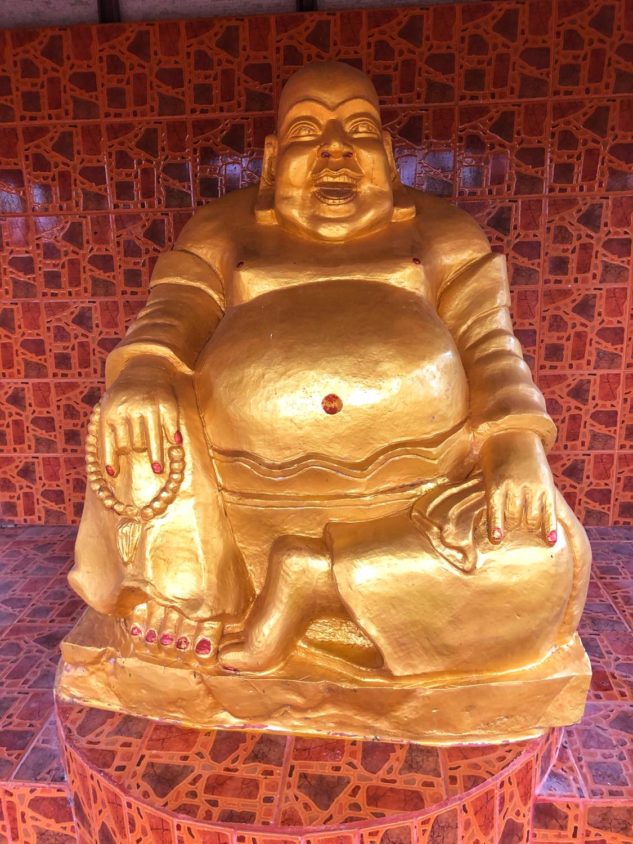Description
Don Hin Thong Priest's Camp Site (สำนักสงฆ์ดอนหินทอง) also goes by the name Wat Pa Don Hin (วัดป่าดอนหิน), which translates to The Highland Monastery of the Gold Stones and The Forest Temple of the Gold Stones, respectively. It is a small rural temple in the middle of nowhere. We love stumbling upon these little, out-of-the-way, Sakon Nakhon temples, with no ornate gates, but just simple wooden signage. The resident monks (who have usually been there for decades) inevitably greets you with a smile (because visitors are rare), and have that laid back, easy to laugh, joyful disposition that one associates with true enlightenment.
The reason that Don Hin Thong Priest's Camp Site is named after "gold stones" is not actually because of gold, but because of ancient temple stones (over 1000 years old) that are on display in a small pavilion, beside a row of famous monk statues.
As you enter the temple grounds, you'll pass by a Fat Buddha statue, where then hands are displaying a horns gesture. This Buddhist gesture is called the Karana Mudra. It is very unusual to see the gesture in a Fat Buddha sculpture, as it is a "protector" gesture, and the Fat Buddha is a symbol or prosperity rather than a protector figure.
On the temple grounds there is also a full body sculpture of Phra Phrom, which is unfortunately a little worse for wear. Phra Phrom is a protector figure, and represents the Hindu god Brahma, which each of the 4 heads/faces representing a different aspect of the deity and the blessing he offers worshipers.
Although Don Hin Thong Priest's Camp Site is well off the beaten track for Sakon Nakhon tourist attractions, there are some additional temples nearby that are worth visiting, including the forest temple Wat Pa Na Kharam and Wat Khok Lo Noi Wanaram, which is home to one of Sakon Nakhon's largest Reclining Buddha statues.










